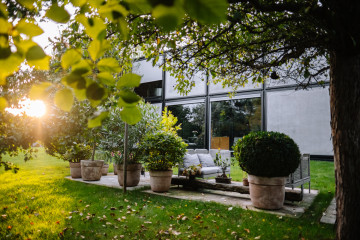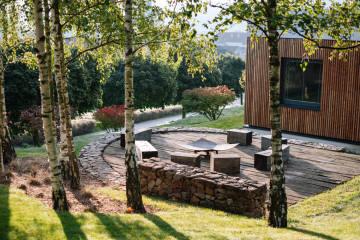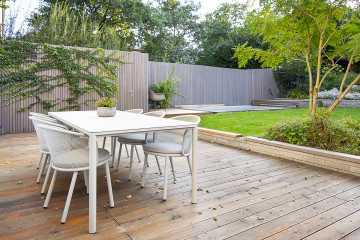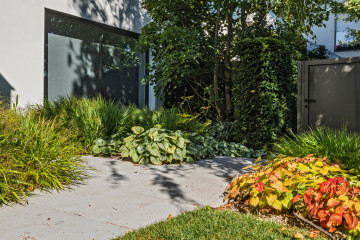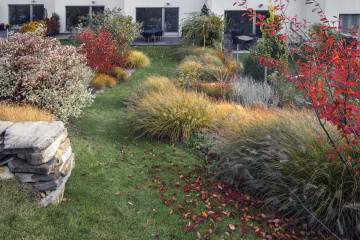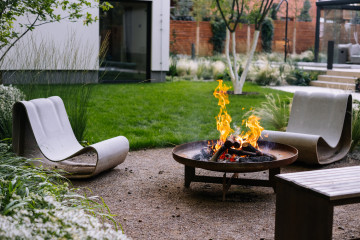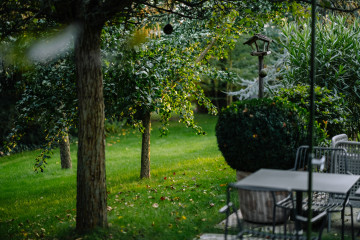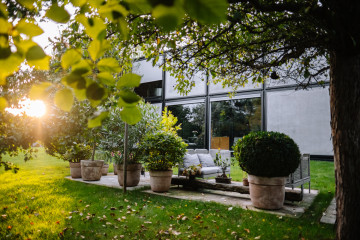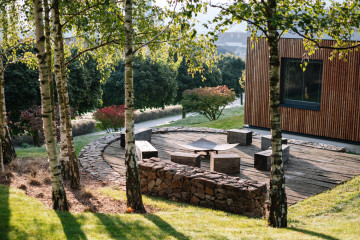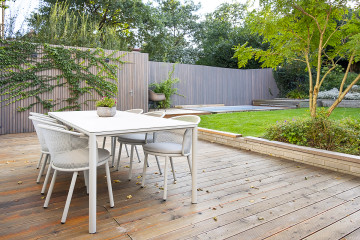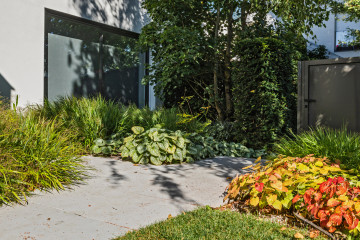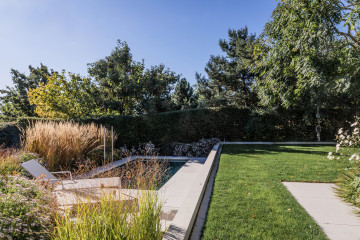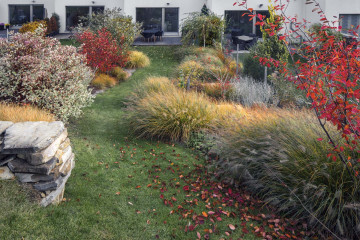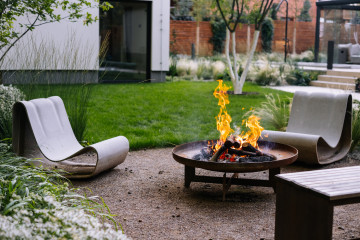When to Start?
The ideal time to plan a garden is during the initial stages of house design. For sloped or otherwise complex plots, it’s advisable to consult with the house architect about the layout to ensure a harmonious connection between the building and the terrain. The characteristics of the plot are crucial – sloped areas, for instance, may require terracing or slope stabilization with suitable vegetation, adding visual appeal and uniqueness to the garden.
Concept of a New Garden
A modern garden should reflect not only the natural conditions but also the needs of its users. From the outset, it’s essential to clarify who will use the garden and what functions it should serve. Families with children often opt for larger grassy areas or natural play elements like multi-stem trees or dense shrubs suitable for hide-and-seek. For relaxation enthusiasts, tranquil corners with benches, flower beds, or water features such as ponds or small fountains might be a priority.
A well-designed garden should consider the natural conditions of the location. Respecting the natural requirements of plants makes maintenance easier and promotes harmony with the surroundings. In shaded parts of the garden, plants that prefer diffused light, such as hostas or hellebores, are recommended. For sunny spots, choose plants that thrive in direct sunlight, such as lavender or prairie species.
Water features, whether in the form of ponds, pools, or small bird baths, not only enhance the garden’s aesthetics but also improve the microclimate. Planning for technical infrastructure for such elements should be incorporated into the garden design from the start.
New Garden or Garden Renovation
A garden is a living entity that evolves over time. Trees and shrubs grow, altering the balance of light and shade, which may necessitate adjustments to planting. It’s crucial to consider future development during the initial design phase to avoid the need to remove poorly placed plants later.
Every garden requires maintenance, although modern technologies like automatic irrigation systems or robotic lawnmowers can significantly ease the workload. Alternative approaches, such as flowering meadows, support biodiversity while reducing the need for regular upkeep.
Materials and Design
When selecting materials, the garden should harmonize with the house’s architecture. Natural materials like wood or Corten steel age gracefully and blend seamlessly with the overall aesthetic. With thoughtful design and the right selection of elements, the garden can serve not only as an ornamental feature but also as an integral part of the home.
The Garden as Part of the Home
Every garden is unique, just like its owners. A meticulously planned garden that respects both the users’ needs and natural conditions can become a harmonious connection between the house’s architecture and the surrounding nature. With a well-conceived concept and careful planning, it can be both a visual delight and a functional, living heart of the home, reflecting the style of its owner and becoming a space where nature meets the comfort of modern living.
Need help designing your garden? Contact our studio - link to contact
